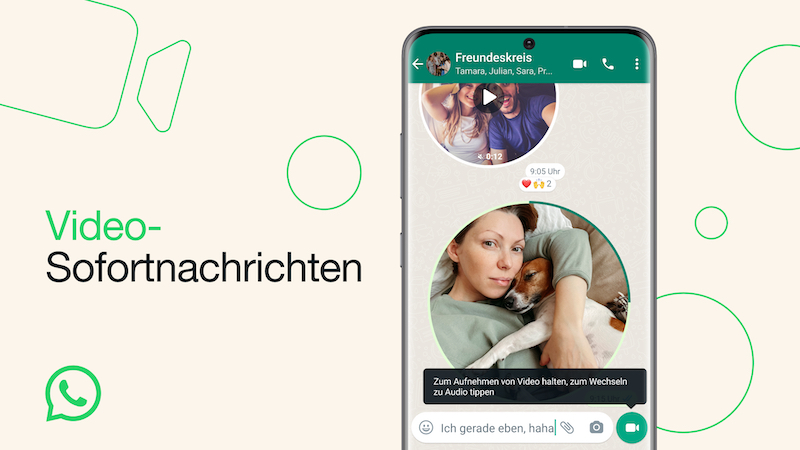With these top 3 trends you can optimize your website and app
Who doesn’t want them? The app or website that users love. To get a little closer to this step, you should consider these three trends during development.
Do you want your users to love your app or website? Develop it barrier-free, make it individually adaptable and involve your users as early as possible.
Contents
Accessibility – beyond your own horizon
Public websites have been required to be accessible for a number of years; but it also makes sense for company pages. Because with barrier-free offers you can reach more customers, make them happier, increase your reach, promote digital participation and become a role model. Your website is barrier-free if restrictions in seeing, hearing, moving or processing information do not have a negative effect on how the web is used.
On the visual level, for example, it is important to pay close attention to the color palette: Can people with color visual impairments also differentiate between the colors used? Are the contrasts between foreground and background colors, shades and other elements clear? Can users read the fonts well on the smartphone screen? Are the individual buttons and fields in your user interface easy to distinguish from one another? You can also get support with numerous helpful tools.
And apart from the classic elements related to accessibility, it is worth asking how easy it is to use your website or app; for example, with a view to whether it is optimized for smartphones. After all, more than half of global web traffic has been via mobile devices since 2017 – and the trend is rising. Can your users reach all the important elements of your app even if they only hold their smartphone with one hand? And did you take into account that women’s hands tend to be smaller than men’s?
With these questions we are only scratching the tip of the iceberg. However, they make it clear that we should look beyond our usual horizons when developing websites and apps.
Customization – individual adaptation options
As different as we are, each of us uses digital services differently. If you enable your users to have individualized experiences with your platform, this often increases satisfaction. Dark mode and customizable layout settings are not just a nice gimmick, they also bind your users more to your products.
But don’t overdo it either: Your users don’t have to be able to adjust the color of each button individually in order to feel addressed. Instead, focus on a few points where you go in depth. It is important that your users have control over the interface. With AI applications in particular, many users feel more comfortable when they can actively influence them. You should be able to understand what is happening and how you can undo changes if necessary. To paraphrase the Nielsen Heuristics market standard: “[Die Leute] need a clearly marked ’emergency exit’ in order to be able to abort the unwanted action without having to go through a long process. “
Remote interviews – valuable feedback despite Corona
Concrete and unadulterated feedback from users is worth its weight in gold for your apps and websites. In pre-pandemic times, many designers therefore liked to use so-called shadowing: They observed users in everyday life how they used apps and / or websites – for example how they had to operate the app with one hand in the subway because they were doing it to hold on. This was so important because it enabled designers to receive much more direct and unfiltered feedback from users: What was the facial expression like, did it suddenly seem confused, annoyed or relieved?
In order to receive valuable user feedback even with the current corona restrictions, there is often no other option than to revert to classic user interviews – which you should then modify a little. Because pure interviews, in which you only pay attention to what is being said, unfortunately do not provide a complete picture of how users really interact with websites and apps. Too often, users give speculative answers that they think are desirable. You are not convinced? What about your media consumption – of course you only use YouTube to watch educational videos, and by no means for amusing cat content, right?
In times of a pandemic (and maybe beyond) you should therefore pay close attention to how something is said in remote interviews: Do the users falter before they answer? Do you seem convinced or rather insecure? For video interviews in particular, you can (with the consent of the respondents) use additional tools – such as programs that track eye movements. You can also do a kind of remote shadowing, in which users * share their screen so that you can see how they use websites. If you also record the whole thing on video, you can concentrate fully on your questions and the observation and later check the recording again in detail. Often you notice things that got lost in the first conversation.
Also try not to run the interviews as a question-and-answer session, but more as a casual conversation. Your interview partners should first and foremost feel comfortable and not be afraid of giving supposedly “wrong” answers. You can also turn the tables and give them the opportunity to ask you critical questions – you can learn even more from that.
If you pay attention to these three points, you are well on the way to ensuring that users * feel addressed by your digital offers. And even if these are trends, two constants always remain: Take your users and their needs seriously and make sure to include them in the development process as early as possible. This saves you costly and lengthy detours.



